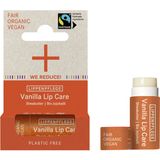Eco-friendly Packaging - A New Generation
Grass paper packaging
Cartons and outer packaging cannot be avoided. Whether it be a shipping box or protective packaging for glass containers - they are a necessary evil that is the better alternative to plastic packaging. But, should we be content with this?
Carton & paper - a few facts
Did you know that Europe uses nearly 77.5 million tons of paper and cardboard a year? It is estimated that the annual per capita consumption of paper (in Germany and Austria) lies at 250 kg. In order to produce this quantity alone, one would need 550 kg of wood, 1,300 kWh of energy and up to 13,000 litres of water. That's a lot for just one person. Fortunately, paper and cardboard are recyclable, but recycling also requires a lot of energy. So, what if one could produce biodegradable cardboard packaging using less energy consumption? Some people have asked themselves this question and tried to take outer packaging to a new level: more resource-conserving, more sustainable and more environmentally friendly. And, the results are in: packaging made from grass paper!
What is grass paper?
Grass paper is uniquely natural and, as the name suggests, consists of sun-dried grass with a percentage of waste paper. Green cuttings are used, which occur in areas not used for agriculture and are therefore the perfect raw material. Don't worry, that doesn't mean that this grass is withheld from animals. An "agriculturally unused area" is exactly what the term suggests: It is neither used for cultivation nor for animal feed - so it is just meadow. But that too has to be looked after. The grass for the cardboard boxes grows in local meadows near manufacturing paper mills - this saves on transport routes and costs, which are known to be considerably high in respect to wood. The best thing about it: grass also grows much faster than wood!
Resource-conserving & more environmentally friendly
Grass is naturally softer and therefore requires much less energy, water and chemicals to produce paper. One ton of paper made from wood pulp requires thousands of litres of water whereas only 2 litres of water is needed to produce the same amount of grass paper - that makes a considerable difference!
Furthermore, CO2 emissions are reduced by 75% when producing grass paper. Not only is this attributed to the shorter transport routes, but also the fact that chemicals, such as mineral oil, are not required for the production thereof.
If you compare two or more of the pretty cardboard boxes, you will notice that not only does each one have a unique pattern, but also that they smell of freshly mown grass. In addition, grass paper is not only pretty, but it is also recyclable and biodegradable.
Composting is a great way to avoid trash in your home. The process turns waste into nutrient-rich soil, which in turn can be used in the garden. Important: be sure to remove any labels that are glued onto the box before composting it.
Here you can find our brands that already using grass paper packaging.
Related products
-
 4.4 (274)
4.4 (274)Evolve Organic Beauty Hyaluronic Serum 200, 30 ml
-11%- Suitable for all skin types - especially dry skin
- Deeply hydrating
- Plumps & smooths the skin
$33.43 $37.63 ($1,114.45 / l)Delivery by December 19
-
 $4.32 $4.88 ($863.40 / kg)
$4.32 $4.88 ($863.40 / kg)Delivery by December 19
Magazine Articles:
-
Get at least 1 free sample
per order -
Delivery in 3 business days.
More than 19.800 products
Secure payments
with SSL encryption technology

